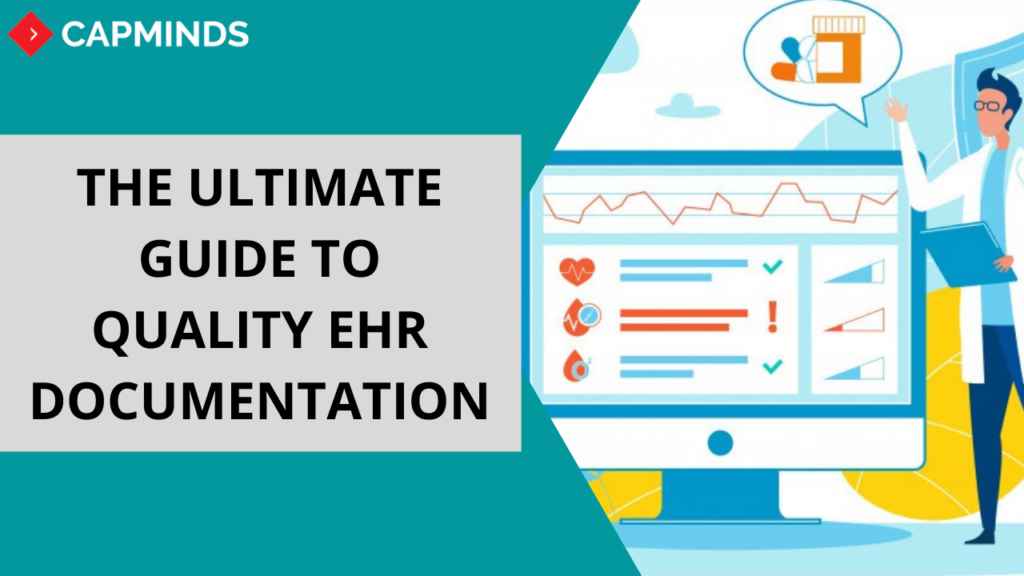The Ultimate Guide To Quality EHR Documentation
EHR documentation in the digital age of healthcare is trending as a hot topic today, as it holds numerous benefits for better care coordination. In this article, we explained the basics, benefits, and best practices of EHR documentation.
What is EHR Documentation?
EHR documentation is often considered as the communication tool used between healthcare providers in documenting patient’s health records and making those data easily available & accessible to providers to provide quality healthcare.
What are the benefits of EHR documentation?
- EHR documentation enables quick access to patient records for more coordinated care
- EHR documentation improves the billing and coding process in an effective way.
- It provides accurate and updated patient’s health information during the time of care
- It enables secure health data sharing between providers and
- EHR documentation helps providers to reduce medical errors and provide quality care.
- It enhances the privacy and security of patient health information
Features Of EHR Documentation Tools
EHR documentation tools offer numerous benefits that are intended to improve both the quality and the utility of clinical documentation, enhancing communication between all healthcare providers. These features highlight traditional and notable requirements for documentation standards while supporting new technologies.
The usage of the EHR documentation features without appropriate guidelines may create data integrity concerns such as invalid auto-population of data fields. So it is very much important to ensure the documentation for the health information used in health care and management is valid and accurate.
Best Practices For EHR Documentation
1. Ensuring Documentation Integrity
Documentation integrity includes the accuracy of the complete health record. It envelops data administration, patient identification, understanding recognizable proof, origin, and record corrections as well as auditing the record for documentation validity when submitting reimbursement claims.
EHRs have customizable documentation applications that permit the utilization of templates to help with documentation. Unless these EHR implementation tools are used correctly, the integrity of the data may be questioned and even perceived as fraudulent activity. So to resolve this, the healthcare providers must understand the importance of reviewing and editing all defaulted data to ensure that only patient-specific data for that visit is recorded, while all other irrelevant data pulled in by the default template is taken out.
READ MORE: THE ADVANCED GUIDE TO EHR IMPLEMENTATION
2. Template Documentation Challenges
Documentation templates can play an important role in improving the efficiency of data collection, ensuring all relevant elements are collected in a structured format. However, these templates also have limitations: Templates may not exist for a specific problem or visit type. This issue can occur if the structure of the note is not a good clinical fit and does not accurately reflect the patient’s condition and services.
3. Patient Identification Errors
The documentation integrity may get affected when the wrong information is documented on the wrong patient health record. Errors in patient identification can affect clinical decision making and patient safety, impact a patient’s privacy and security, and result in duplicate testing and increased costs to patients, providers, and payers.
Organizations must have a patient identity integrity program that includes performance improvement measurements that monitor the percentage of error rates and duplicate records within their electronic master patient index.
READ MORE: TELEHEALTH EHR INTEGRATION IMPROVES CLINICAL WORKFLOW
4. Compliance Education
Healthcare organizations must spend some time to ensure providers are well-informed about compliance and legal risks. How it can be achieved? – The EHR training process. Organizations may need to develop initiatives in EHR education to make sure they do not risk compliance problems. Staff education on best practices for documentation should focus mainly on the integrity of the health record.
Final Thoughts
With the increased adoption rate of electronic health records (EHRs), there is also a concern that a +potential loss of documentation integrity could lead to compromised patient care, care coordination, as well as fraud, and abuse. So these best practices for quality EHR documentation guide you for maintaining documentation integrity while using automated EHR functions.



